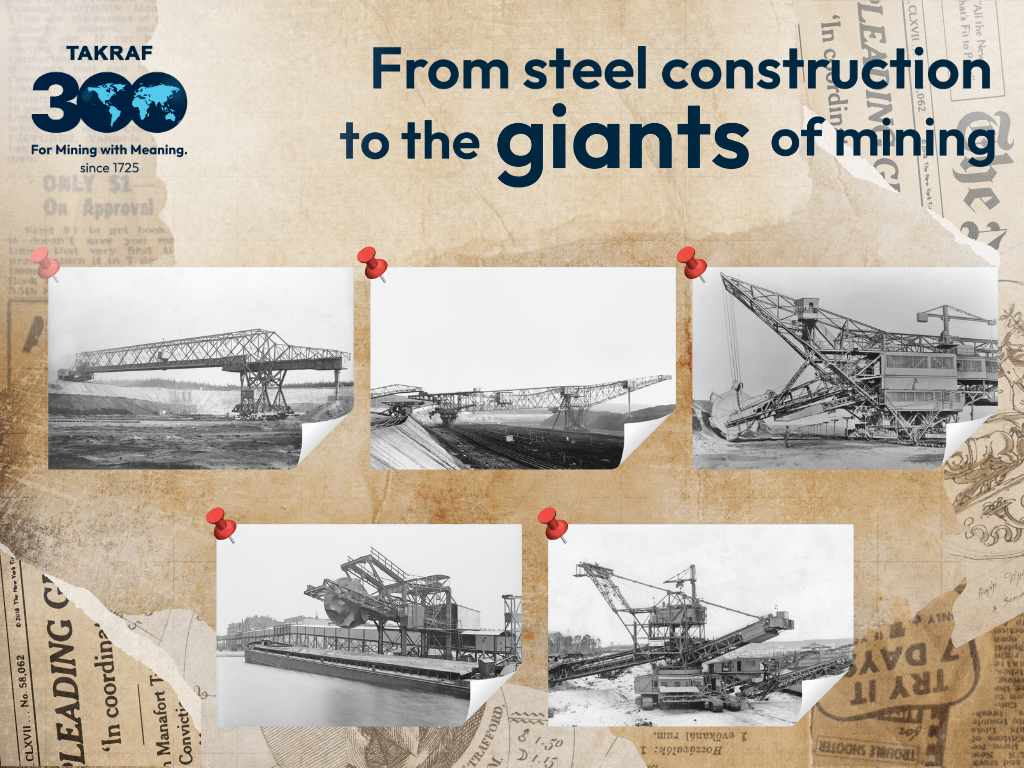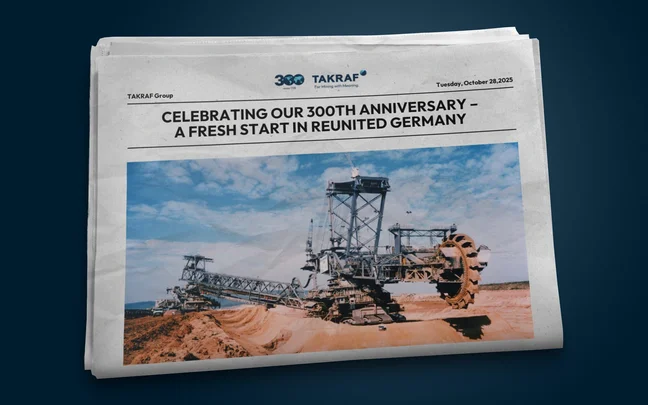The 20th century brought another wave of transformation for Lauchhammer — marking the true origin of TAKRAF Group as we know it today. As coal mining expanded, the need for large-scale machinery grew rapidly — and Lauchhammer was ready to meet the challenge.
The era of bridge conveyors and bucket wheel giants
From 1925, Lauchhammer began producing bucket wheel excavators and large conveyor systems. These machines became the driving force behind lignite mining in Germany, Poland and other countries.
The technical know-how of this period laid the foundation for TAKRAF's leading role in the mining sector today.
By the late 1950s, Lauchhammer engineers made mining history: In 1958, the groundbreaking F34 bridge conveyor was built — the first standardized overburden conveyor bridge that set new efficiency standards in open-pit mining. These massive machines enabled continuous overburden removal, revolutionizing coal mining. Lauchhammer also developed the first modern bucket-wheel excavators, which became the backbone of lignite mining operations worldwide.
Driving Europe’s energy supply
From the Lusatian coalfields to Central Germany, Lauchhammer’s bridge conveyors and excavators powered Europe’s post-war industrial growth and energy security.
The combination of bridge conveyor technology and bucket wheel excavators enabled continuous material handling - a breakthrough that positioned Lauchhammer as a global center of mining technology expertise.
By the mid-20th century, TAKRAF’s engineering innovations had earned international recognition and laid the foundation for the company’s leadership in large-scale mining equipment.
"With the leap into bridge conveyor systems and mining giants, we cemented our role as a global technology leader. This is where TAKRAF Group’s international success story truly began." , says Thomas Jabs, TAKRAF Group CEO.
Next month, we will explore how TAKRAF expanded its global footprint and set world records (during GDR times)!
Innovation out of tradition - It pays to talk to a specialist!

